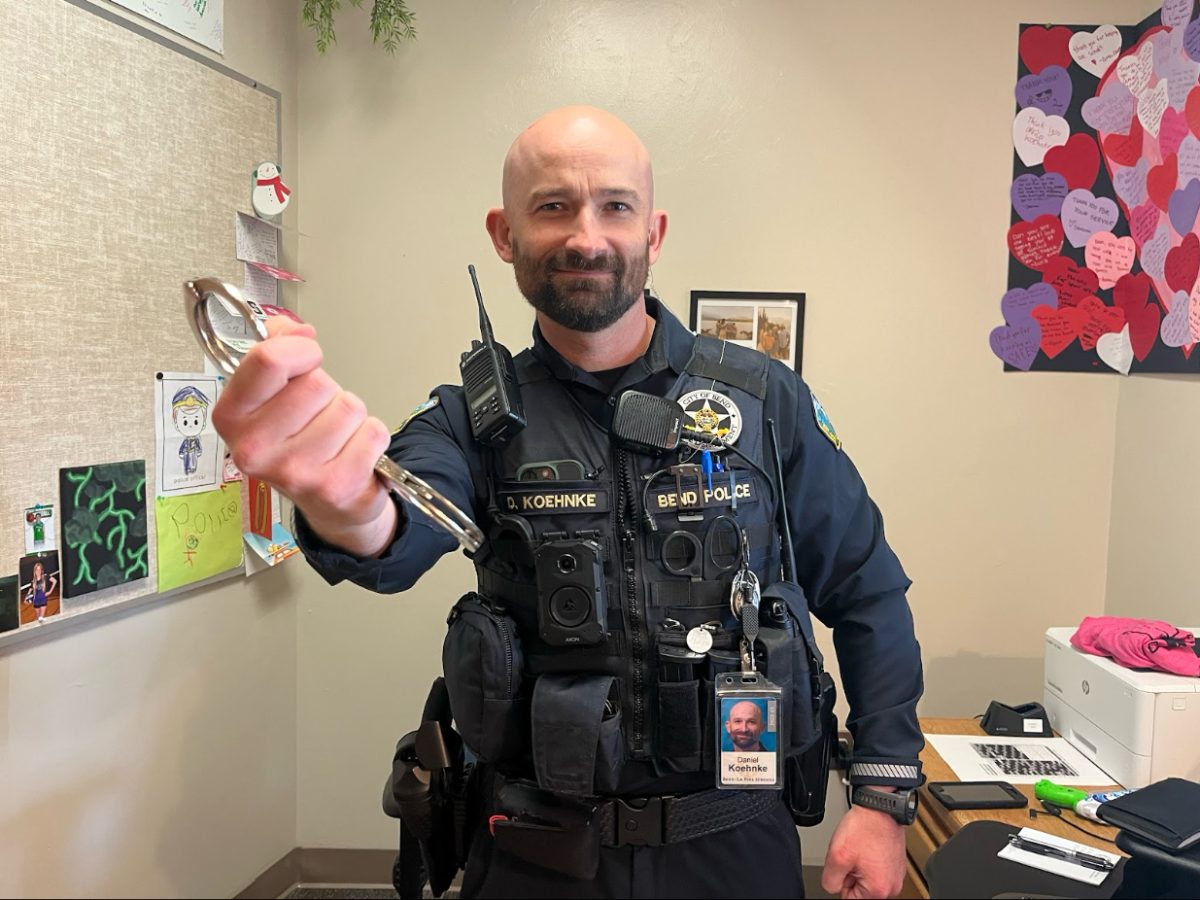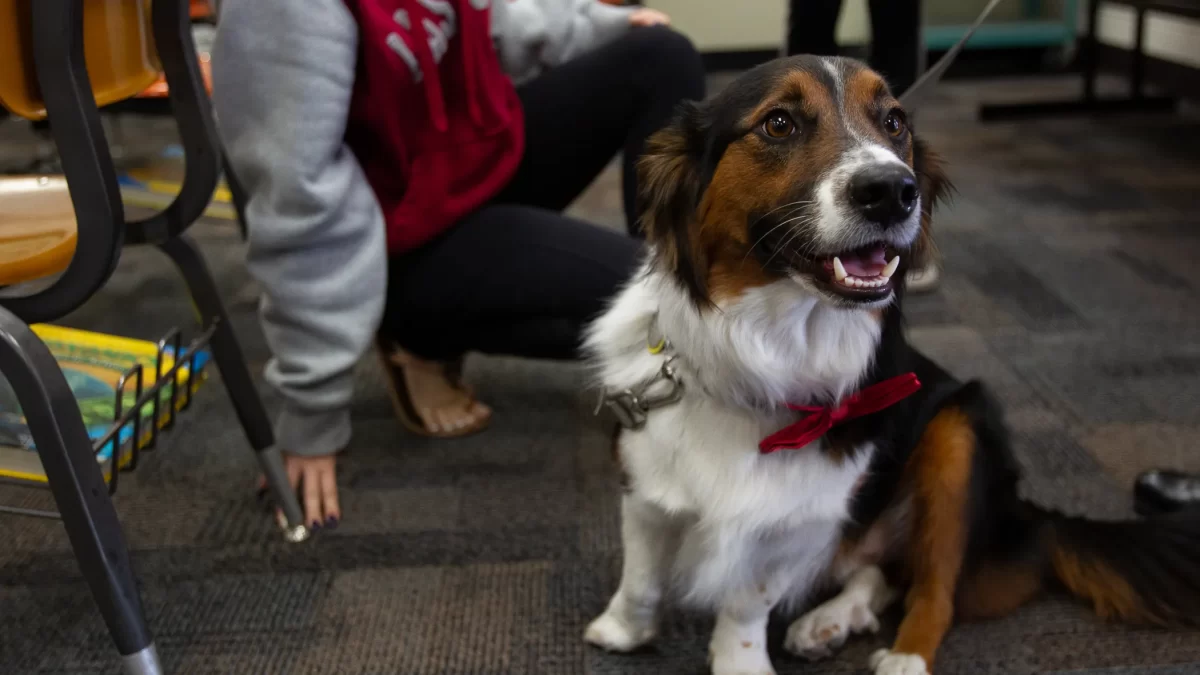A smiling face, hands reaching out, brushing through smooth fur. A short reprieve from the stress of high school life.
This is the scene observed time and time again when a therapy dog walks through the halls of Summit High School. Students stop to greet the animal and walk away glowing with delight.
Multiple therapy dogs, namely Joey, Tilly and Shorty, have been special guests welcomed into Summit mindfulness teacher Jill Waskom’s third-period class throughout the year. During their visits, Waskom has observed the therapy dogs bring joy and a sense of calm to her students. In an interview, Waskom explained that the dogs can sense which students are the most stressed, sniffing out the students with the highest amounts of the stress hormone cortisol. Attracted to these stressed students, the dogs, she explained, almost absorb their stress, releasing the calming hormone oxytocin, resulting in a sense of calm in the student which can help them better focus on the day ahead of them.
The scientific community seems to support Waskom’s belief. It is well known that dogs have a much better sense of smell than humans, with it often said that dogs smell the world like we see the world. Veterinarians at Veterinary Centers of America Animal Hospitals have found that the area of a canine’s brain linked to analyzing smells is about 40 times larger than the comparable region of the human brain. With this amazing sense of smell, dogs can sense rising levels of cortisol that humans naturally release through our sweat and breath. Inadvertently, humans have taught their furry friends that the smell of high cortisol levels means they will get rewarded with physical affection because of the tendency of people to seek repetitive behavior, such as petting a dog when their stress is high.
Since the therapy dogs only attend Waskom’s class, only a handful of students get to experience the stress relief these animals provide. Staff across the school have voiced their interest in having therapy animals in more than just mindfulness classes. Summit Librarian and teacher Eila Overcash supports the idea of the general presence of animals in schools, having been “arguing for a library cat [or dog] from the minute” she started working at Summit.
“I believe that students need a place to be able to unwind,” said Overcash. “[I] want the library to be that place where kids, on their open periods, can come in and pet a dog for a while or curl up and do homework while the dog sits next to them…just being near an animal is sometimes enough.”
Students and staff alike think therapy dogs could improve the school’s energy. Summit senior Hunter McGrane discussed his opinion on therapy dogs in schools during a lunch session of the Civics Club. He supported the idea of having therapy dogs, but McGrane stressed the importance of safety and weighing the pros and cons of animals in the school.
“It would be hard to implement [therapy dogs] because of allergies,” said McGrane during the group discussion. The club proposed solutions to this problem such as designated areas where the therapy animals could be and the implementation of one-on-one appointments. It seems as though students are all for therapy dogs, but most of them are unsure of how Summit would introduce them into the school.
Summit counselor Andy Fleming is in support of the therapeutic effects of animals. Recalling his battle with Hotchkin’s Disease, Flemming explained that his family vizsla was one of his greatest supporters during that difficult time. He smiled, reminiscing over the memory of his dog always being there for him during his illness.
“[Having] some animal, which was almost like a small human keeping me company when parents went to work and friends couldn’t be there [was comforting],” said Fleming. “The more we can add life to people’s lives, the better.”
Vice Principal Mary Thomas has witnessed firsthand the benefits of having a therapy animal in the classroom. Last year, as principal of High Desert Middle School, Thomas and the school district allowed a teacher to bring in her certified therapy dog to work. Thomas observed the students develop a connection to the dog and the classroom.
“It was such a great opportunity for the kids to feel a connection to the classroom the dog was in,” said Thomas. “[There] almost was a feeling of home.” When describing her experience with therapy animals, Thomas emphasized the importance of the animals having undergone the proper training to ensure the safety of students and staff.
In a time of record levels of anxiety and depression among adolescents, with the Journal of Adolescent Health stating that rates of adolescent depression have increased from 8.1% in 2009 to 15.8% in 2019, every effort should be undertaken to mitigate this secondary pandemic. Therapy animals represent a low-risk, inexpensive addition to a school district’s tool kit to enhance student and staff mental health.

























































